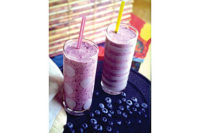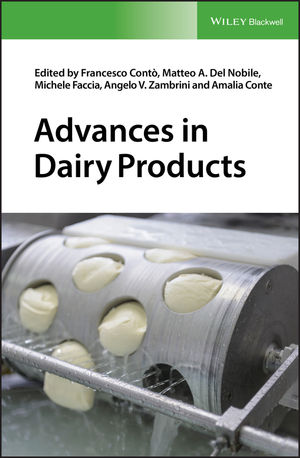Discussing superfruits in dairy and beverages
The very definition of a superfruit is arbitrary, but that’s only the beginning of the many questions surrounding so-called super foods. Be careful in the marketing of dairy foods and beverages spiked with superfruits.

Blueberries appeal to consumers and the fruit is associated with brain and heart health. A yogurt smoothie gets its color from blueberries. Find this recipe and others at blueberrycouncil.org.





As people continue to search for a miracle cure for what ails and ages them, there will always be a market for “super foods,” that is, foods and beverages somehow deemed higher-than-average in health-promoting properties. Because consuming a wide variety of nutrient-rich foods and beverages is important to health, it makes sense to market super foods as nutrient-rich choices. But I get miffed when the marketing of super foods implies health benefits not backed by sound science. It’s not easy talking friends down from the high of “discovering” that the secret to a long, healthy life lies within bottles of superfruit beverages.
But what makes a super food super? It’s hard to say since there’s no scientific or regulatory definition of super foods or superfruits. The marketing of super foods is a free-for-all. In such an environment, companies must act responsibly so as not to misrepresent their products and potentially mislead consumers. And in that, there’s a lot to consider.
The name game
A savvy ad agency invented the term superfruit, no doubt. There is no standard definition of a superfruit — no list of required health-promoting properties, no descriptions of how these properties promote health and no indication of the amounts required to do so.
“Many, perhaps most fruits, can somehow qualify as super, depending on how you qualify that,” said Mark Blumenthal, founder and executive director of the American Botanical Council. “Is the definition based on the chemical composition, documented health benefits or a combination of both?”
Fruits with high levels of antioxidants are often deemed superfruits, explained Blumenthal. However, recent research suggests that the antioxidant level in food (measured by an in vitro assay called ORAC) may have limited or no correlation with biological activity in the human body. But antioxidants are not the be-all and end-all of a plant’s potential health benefits — they’re just one of the many types of phytochemicals, or plant chemicals.
Scientists have identified thousands of phytochemicals and studied a few in-depth. There is some evidence that a diet rich in fruits, vegetables and whole grains reduces risk of certain chronic diseases and conditions such as high blood pressure, heart disease, diabetes and some types of cancer, but evidence does not support the claims that phytochemical supplements have the same beneficial effects as whole foods.
“In the plant world, there seems to be some foods that are packed with more nutrients, such as phytochemicals, than others,” said Lauren Swann, registered dietitian and owner of Concept Nutrition Inc., a consulting service specializing in food labeling and nutrient analysis. “There’s nothing wrong in recognizing that some foods are very rich in what we need to counteract chronic health conditions.”
Fruits contain numerous phytochemicals that have various mechanisms of action, many which are biologically beneficial. This makes the research regarding phytochemicals and human health very complicated.
“The science is relatively young, it’s based on traditional uses [of phytochemicals] and the studies are often poorly designed,” Blumenthal added. “But a growing body of research shows either interesting, suggestive or sometimes confirmed physiological benefits of [eating] certain fruits. It’s an area of potential future opportunities.”
A preference for traditional fruits
When the term superfruit was coined, the focus was on exotic fruits such as noni, mangosteen and acai. According to data from the Chicago-based research organization Technomic, consumer purchases of products containing superfruits were driven by a desire for antioxidants’ health benefits rather than taste. Currently, consumers’ affinity for exotic fruits seems to be waning as they look for antioxidants in other sources, such as herbs and spices, and return to a preference for traditional fruit flavors such as apple, berry and orange.
This shift may be a boon for processors
“Exotic fruits must be used in smaller amounts, they’re difficult to source, and there are cost considerations,” said Cindy Conroy, senior product developer, Tree Top Inc. “Now that people are familiar with superfruits and aware of the [health] advantages of fruit in general, they’re seeing domestically, easily sourced fruit such as tart cherries, blackberries and apples in the same light [nutritionally] as superfruits. You can put more apple into a product [than an exotic fruit], for example, and get more value.”
Flavor blends appeal to both consumers and processors.
“In terms of trends, I see a marriage of domestic with exotic,” says Doug Bye, a technical account manager with Tree Top. “A blueberry/acai blend helps mitigate the cost of the exotic fruit and the blueberry is more familiar to consumers.”
According to Tom Payne, industry specialist for the U.S. Highbush Blueberry Council, blueberries have an across-the-board appeal and they’re associated with brain and heart health.
“Because of blueberry’s growing popularity, it’s no wonder that they’re one of the hottest ingredients in dairy lately,” said Payne.
At Fruitcrown Products, the most popular superfruit bases include blueberry, acai, pomegranate, cranberry and goji. Bill Weiskopf, vice president of sales and new business development, has also noted a “blend trend” including blueberry/acai, pomegranate/cherry and strawberry/goji.
“In addition, we continue to search for the next new high-antioxidant fruit and the best flavor combinations,” he said.
Another consideration is food safety.
“With the emergence of acid-tolerant pathogens, any ingredients added to dairy must be rendered safe,” said Bye.
Tree Top has a validated pasteurization process that retains fruit’s color and flavor. Fruitcrown’s Weiskopf also notes the inherent risk of working with agricultural fruits.
“Whenever working with natural fruits, it’s important to use aseptically processed fruits. Our aseptic system is designed to protect against microbiologic contamination and protect the natural flavor and color of the fruit.”
Marketing dairy with fruit ingredients
And finally, there are regulatory challenges.
“Using superfruit concentrate or extract to impart flavor and/or color is one thing,” said Blumenthal. “But is it possible to add enough of a superfruit ingredient to have a health effect? It depends on how much is added and how much a person would consume on a daily basis — and will that honestly translate to the same amount and same effect as what’s used in human clinical trials?”
When manufacturers are unable to make certain claims about fruit and health, Blumenthal suggests relying on nutrition education and marketing from third-parties such as non-profits with expertise in fruit’s health benefits.
Swann, who sees validity in the term super food although she prefers the term “power food,” realizes that there’s an opportunity for the food industry to exploit these terms.
“Some manufacturers will only put in a pinch of fruit flavor and ride on the nutrient halo,” she said. “This is the age of transparency. Food companies should be as honest as possible. If you’re going to tout the health benefits of superfruits, have something to back it up.”
Looking for a reprint of this article?
From high-res PDFs to custom plaques, order your copy today!












